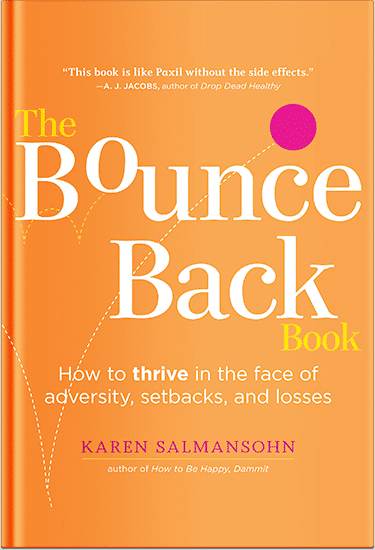 A stability program SOP isn’t just a template for time‑point pulls—it’s the quality system artifact reviewers use to judge if your shelf life, labeling, and change management are built on science rather than wishful thinking.
A stability program SOP isn’t just a template for time‑point pulls—it’s the quality system artifact reviewers use to judge if your shelf life, labeling, and change management are built on science rather than wishful thinking.
In FY2024 alone, the FDA documented hundreds of drug recalls, with the top ten product categories accounting for two‑thirds of all recalls—evidence that weaknesses in product quality systems still surface in the market. See FDA’s latest Report on the State of Pharmaceutical Quality for the data set behind those figures.
What regulators actually look for in a stability SOP
Regulators read an SOP through the lens of ICH Q1 (A–F) and current GMPs. The question isn’t “do you have a program?” but “does your program consistently generate decision‑grade evidence?” To withstand scrutiny, your SOP should:
- Tie scope and intent to ICH: Explicit mapping to Q1A (long‑term/accelerated/intermediate), Q1B (photostability), Q1D (bracketing/matrixing), and Q1E (data evaluation). If you deviate, you must provide a written, science‑based justification.
- Define lot selection and packaging: Use production‑representative lots and final container‑closure; capture container‑closure integrity expectations for sterile and moisture‑sensitive products.
- Lock in storage conditions and pulls: Specify long‑term, intermediate, and accelerated conditions with allowable tolerances and a pull calendar (e.g., 0, 3, 6, 9, 12, 18, 24 months long‑term), plus criteria for adding time points if accelerated shows significant change.
- Mandate stability‑indicating methods: Methods must resolve degradants, be validated for accuracy, precision, specificity, LOQ/LLOD, and robustness; include system suitability and forced‑degradation link‑back to prove “stability‑indicating.”
- Prescribe statistical treatment: Require regression and trend analysis for assay/impurities and prespecify the expiry‑dating model (e.g., worst‑case slope with confidence bounds). For accelerated data, state how Arrhenius/temperature–humidity models inform predictions—and when they do not.
- Embed data integrity: ALCOA+ expectations, raw‑data retention, audit trails, electronic record controls (21 CFR Part 11/Annex 11), and change‑control hooks when trending drifts.
- Detail governance for excursions and OOS/OOT: Define temperature/RH excursion handling, quarantine logic, OOS/OOT investigation triggers, CAPA linkages, and criteria to invalidate a time point.
- Address lifecycle commitments: Ongoing (post‑approval) stability, annual protocol review, site transfer comparability, formulation/process changes, and how you bridge data across changes.
Design choices that make programs reviewer‑proof
Start with degradation knowledge. A credible program begins with forced degradation that maps chemical and physical pathways (hydrolysis, oxidation, photolysis, polymorph changes, aggregation for biologics). You’re not “checking a box;” you’re deciding which attributes control shelf life.
Justify bracketing and matrixing. If you plan to reduce testing via Q1D strategies, the SOP must force formal risk assessments: define brackets (e.g., strength, container size) and matrices (time points vs. configurations), and require confirmation batches to verify assumptions.
Design for climatic reality. Explicitly assign climatic zones for target markets and translate them into long‑term conditions (e.g., 25°C/60% RH vs. 30°C/65% RH) and transport simulations. Photostability design should reflect real‑world light exposure, not minimum lux‑hours alone.
Bake in microbiological thinking. For aqueous and multi‑dose products, require preservative‑effectiveness testing at start and end of shelf life and specify microbial limits trending; for sterile injectables, link sterility, CCI, and sub‑visible particle control to stability claims.
Container‑closure as a variable, not a constant. For moisture‑ or oxygen‑sensitive drugs, the SOP should trigger barrier verification (WVTR/OTR, headspace oxygen trend) and require re‑evaluation when the packaging supply chain changes.
Govern the chambers, not just the samples. Call out qualification and mapping of stability chambers, continuous monitoring with alarms, and deviation handling that explains how you determine sample suitability after excursions.
Common failure modes reviewers flag (and how to pre‑empt them)
- Non‑representative material: Using a lab‑scale or pilot batch, unlike a commercial process, is not representative of commercial process capability. Fix: require a comparability rationale or repeat on representative lots.
- “Stability‑indicating” in name only: Methods that don’t resolve degradants or aren’t validated for specificity. Fix: the SOP forces stress studies that produce degradants and ties those to method development and acceptance criteria.
- Accelerated reveals significant change—then silence: No protocolized rule to add intermediate or tighten long‑term monitoring. Fix: define decision trees that automatically expand studies upon trigger conditions.
- Inadequate documentation: Missing chain‑of‑custody, sample reconciliation, or electronic audit trails. Fix: mandate contemporaneous entries, metadata capture, and routine data‑integrity checks.
- Statistics after the fact: Retro‑fitting expiry dating when data are borderline. Fix: predefine models, confidence levels, and handling of outliers before any data is generated.
- Biologics blind spots: Ignoring aggregation, deamidation, or potency drift; relying on small‑molecule paradigms. Fix: include structure‑function analytics, stress‑hold steps, and cold‑chain excursion modeling.
How to write the SOP so it survives an FDA/EMA inspection
1) Purpose, scope, and definitions
Tie the SOP to the quality manual and specify covered dosage forms and markets. Include definitions for significant change, OOS/OOT, bracketing, matrixing, and shelf life vs. retest period.
2) Roles and responsibilities
Name the accountable functions: Analytical Development (methods), QA (approvals), Supply Chain (packaging and distribution inputs), and Regulatory (filing strategy). Require training records before execution.
3) Study design and pull schedules
List default conditions and time points for long‑term, intermediate, and accelerated studies. Include triggers for adding time points or extending duration. Provide templates for pull calendars and sample labels.
4) Sample handling and chain‑of‑custody
Define sampling plans per batch, reserve quantities, storage setup, and reconciliation at study end. Require photo documentation for container condition and tamper evidence.
5) Analytical methods
Require validated, stability‑indicating methods with system suitability and periodic re‑validation. Tie method updates to change control with impact assessments on trending continuity.
6) Equipment and chambers
Mandate qualification (IQ/OQ/PQ), continuous monitoring, alarm limits, and documented responses to excursions. Include backup power expectations and data logger calibration.
7) Data capture and integrity
State raw‑data formats (chromatograms, spectra, images), metadata requirements, and audit trail reviews. Require lot‑level stability summaries and cumulative trend reports.
8) Statistics and expiry assignment
Prespecify models (e.g., linear degradation with 95% one‑sided confidence), pooling rules, and handling of batch‑to‑batch variability. Include rules for translating statistical expiry to labeled shelf life, including label claims (e.g., “store refrigerated”) and in‑use periods.
9) Exceptions, deviations, and investigations
Define decision trees for OOS/OOT, sample mishandling, or chamber failures. Link CAPA outcomes to protocol amendments and dossier updates.
10) Stability summary report
Require a report structure that aligns with CTD Module 3.2.P.8/3.2.S.7, including narrative conclusions, justification of extrapolations, and clear commitments for ongoing studies.
Calibrating expectations for the development phase
Early development doesn’t mean “anything goes.” For Phase 1 material, regulators expect fit‑for‑purpose control with a credible path to commercial robustness. Your SOP should distinguish:
- Phase‑appropriate evidence: Shorter real‑time coverage supplemented by accelerated data and well‑designed forced degradation, with transparent limitations.
- Flexibility with guardrails: Allow protocol amendments as formulation/process knowledge improves, but require documented rationales.
- Forward compatibility: Data structures and templates that flow into later CTD submissions and PQ/CMC initiatives.
For a practical blueprint of trial‑ready documentation beyond stability—batch records, specifications, and change control—see this resource on Phase 1 SOPs.
Lifecycle and post‑approval: where SOPs often earn their keep
Regulatory scrutiny intensifies post‑approval as you change sites, scale processes, or adjust packaging. A durable SOP anticipates:
- Ongoing stability commitments: Annual pulls on at least one commercial batch per strength/container, with criteria to add batches when changes occur.
- Change‑management bridges: When moving sites or tweaking processes, require bridging strategies (side‑by‑side stability, accelerated challenges) and define what constitutes comparability.
- Market‑specific needs: Adjust long‑term conditions for new climatic zones and reassess photostability if pack or artwork changes.
- Digital readiness: Structure data for modern PQ/CMC initiatives and electronic submissions so reviewers can trace raw to reported.
Reviewer‑ready checklist
- Program maps explicitly to ICH Q1 (A–F); deviations are justified in writing.
- Representative commercial‑like lots in final packaging; CCI/WVTR/OTR accounted for.
- Long‑term/intermediate/accelerated conditions and pulls are predefined with tolerances.
- Forced degradation links to method specificity; preservative effectiveness as needed.
- Statistics prespecified (model, pooling, confidence), not retro‑fitted post hoc.
- Chambers qualified and continuously monitored; excursions were governed by decision trees.
- OOS/OOT, CAPA, and data‑integrity controls are explicit and auditable.
- Lifecycle commitments and change‑control bridges are codified.
Bottom line
A stability program SOP passes FDA/EMA scrutiny when it demonstrates control, not compliance theater. Build from degradation science, make risk‑based design decisions explicit, insist on stability‑indicating analytics and predefined statistics, and embed data integrity and lifecycle governance. Do that, and your expiry dating and labeling become defensible—surviving both day‑one review and the inevitable changes that follow market entry.
P.S. Before you zip off to your next Internet pit stop, check out these 2 game changers below - that could dramatically upscale your life.
1. Check Out My Book On Enjoying A Well-Lived Life: It’s called "Your To Die For Life: How to Maximize Joy and Minimize Regret Before Your Time Runs Out." Think of it as your life’s manual to cranking up the volume on joy, meaning, and connection. Learn more here.
2. Life Review Therapy - What if you could get a clear picture of where you are versus where you want to be, and find out exactly why you’re not there yet? That’s what Life Review Therapy is all about.. If you’re serious about transforming your life, let’s talk. Learn more HERE.
Think happier. Think calmer.
Think about subscribing for free weekly tools here.
No SPAM, ever! Read the Privacy Policy for more information.
One last step!
Please go to your inbox and click the confirmation link we just emailed you so you can start to get your free weekly NotSalmon Happiness Tools! Plus, you’ll immediately receive a chunklette of Karen’s bestselling Bounce Back Book!


 A stability program SOP isn’t just a template for time‑point pulls—it’s the quality system artifact reviewers use to judge if your shelf life, labeling, and change management are built on science rather than wishful thinking.
A stability program SOP isn’t just a template for time‑point pulls—it’s the quality system artifact reviewers use to judge if your shelf life, labeling, and change management are built on science rather than wishful thinking. 